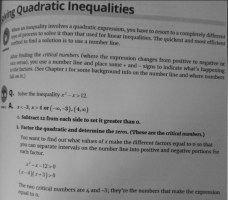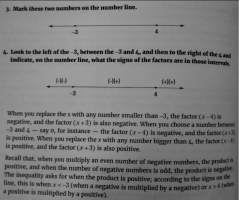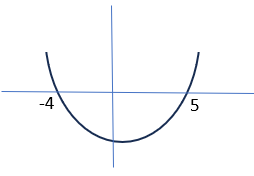Harry_the_cat
Elite Member
- Joined
- Mar 16, 2016
- Messages
- 3,772
So, can you solve the equation to find the x-intercepts?
OK. Earlier you said you could graph parabolas, but maybe you can't. I'm just trying to establish what you do know.No. I dont know how to do that.
I follow the algebra 1 workbook for dummies. Maybe there exist books that are better? How did you learn algebra?OK. Earlier you said you could graph parabolas, but maybe you can't. I'm just trying to establish what you do know.
Through classroom instruction from "vary caring" instructor and practice and practice and practice.......How did you learn algebra?
First, you clearly didn't mean this,View attachment 38452
And how do you come to that conclusion? What makes that you know that this is the solution?

I really dont know man..So, in which interval(s) will it be negative, making the original inequality true?
And do you include or exclude the endpoints of that interval?
Please make an attempt, rather than depend on others to do it for you. We're not here to do the gymnastics routine for you, but to be spotters and coaches, keeping you from hurting yourself and guiding you as you learn the routines. (Yes, I've been watching the Olympics. And this is not the finals, but the beginners' gym.)I really don't know man..
What three regions did you divide the number line into?Oke, this forum is not going to work for me. You keep it difficult for me.
You haven't identified the regions, but you have at least seen the idea and made a statement about them.Uhm, the three regions are plus min plus. Between -4 and 5 have a negative value
Can you say anything more specific about why that is not clear? Which symbol, or concept, are you unsure of? Is there a reason you made part of that bold?Yes, i have problems with identifying the intervals. Also i have problems with indentifying the interval that is the solution. Uhm, my brain is frying... Its still not clear to me why -4≤x≤5 is the answer.
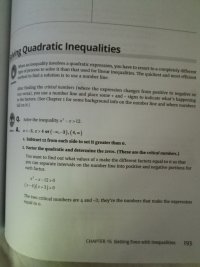
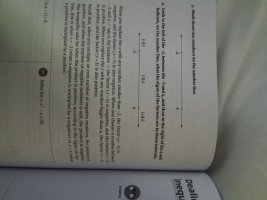
I guesses that. My first thought had been Swedish, but I see "bladeren" is Dutch, too.And i agree with you that communication is important. My English is not that great. Im dutch. Thats my obstacle.
The images you provide show that they do use interval notation. That's good.In the algebra workbook they didnt say something about intervals. I think that i using a book that is lack of explanation. Its the algebra 1 workbook for dummies. More people experience troubles with that book?
